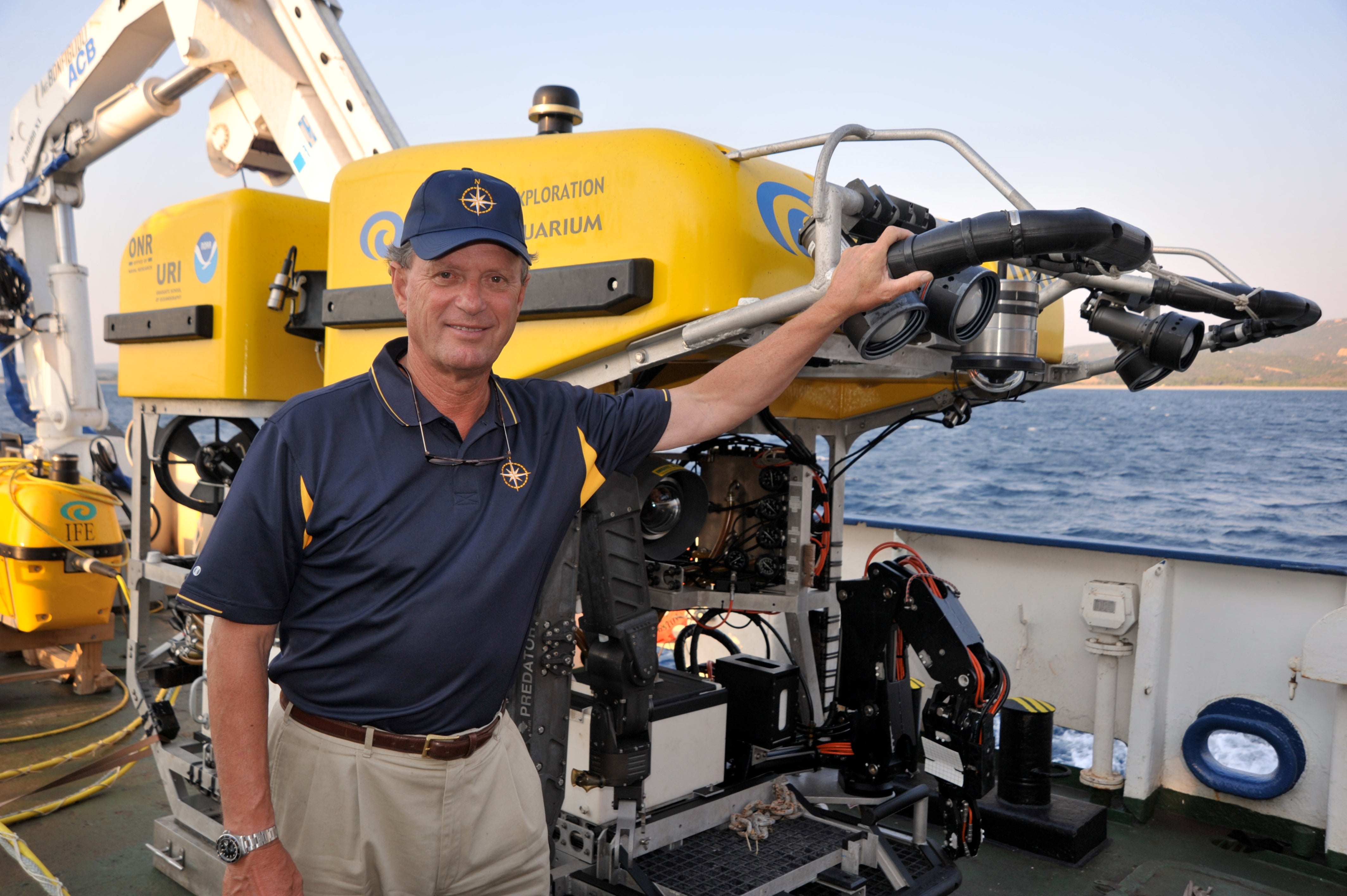GSO professor Robert Ballard and his team aboard Ocean Exploration Trust’s E/V Nautilus are at Nikumaroro Island, a remote atoll within the Phoenix Islands archipelago to look for Amelia Earhart’s airplane.
Ballard said during a telephone interview that if his team finds the wreck and with permission from the Republic of Kiribati, it plans to raise portions of the plane, including its two Pratt & Whitney engines, for conservation and preservation. Joining Ballard, National Geographic, and the Ocean Exploration Trust on the expedition from GSO are graduate students Megan Lubetkin and Kristopher Krasnosky.
Earhart and her navigator, Fred Noonan, disappeared more than 80 years ago during her around-the-world flight. Earhart’s plane was reported missing July 2, 1937, during the second-to-the last leg of the flight after taking off from Lae, Papua New Guinea.
Ballard, the man who found the Titanic, and the team departed Aug. 7 from Samoa for Nikumaroro, formerly called Gardner Island, an uninhabited atoll that is part of the Micronesian nation of Kiribati, National Geographic said in a recent announcement. The expedition will be filmed by National Geographic for a two-hour documentary airing Oct. 20. In addition to his work at URI, Ballard is an explorer-at-large at National Geographic.
“She was supposed to land at Howland Island, (a territory of the United States that is about 1,650 miles southwest of Honolulu),” Ballard said. “The Coast Guard even made a landing strip there for her.”
Instead, Ballard believes, like The International Group for Historic Aircraft Recovery (TIGHAR), that the deep ocean surrounding Nikumaroro is the final resting place of the plane.
“Think of the island as a mesa with a flat-top mountain that rises up 10,000 feet,” Ballard said. “So it’s a 10,000-foot volcanic mountain that is very steep going up to its summit. We believe she landed on the reef near the edge of a cliff. Eventually, the plane slid down the steep slope into the deep ocean. The plane will probably be in pieces, which will actually be good for us. If you can find one piece, you can find them all. And so our first order of business will be to make an extremely detailed map.”
Ballard said the first goal is to find the plane, but that the team will also be searching on land for the remains of Earhart following leads discovered by previous expeditions to the island. The land-based expedition team will be using bone-sniffing dogs, which have been specially trained to lead archaeologists to human remains, to conduct the search.
“Whatever we find will be turned over to the local government of Kiribati,” he added.
Originally published at URI Today.

